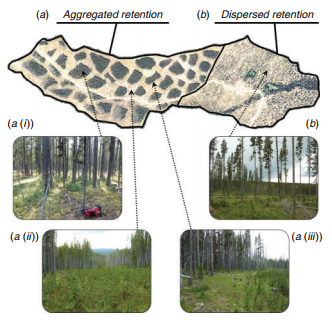Variable-retention harvesting in logdepole pine offers an alternative to conventional, even-aged management. This harvesting techniques promotes structural complexity of age-class diversity in residual stands and promotes resilience to disturbance. Researchers examined fuel loads and potential fire behaviour 12 years after two mode of variable-retention harvesting (dispersed and aggregated retention patterns) crossed by post-harvest prescribed fire (burned or unburned) in central Montana. Results characterize 12-year post-treatment fuel loads. Overall, results illustrate trade-offs between potential fire attributes that should be acknowledged with variable-retention harvesting.

